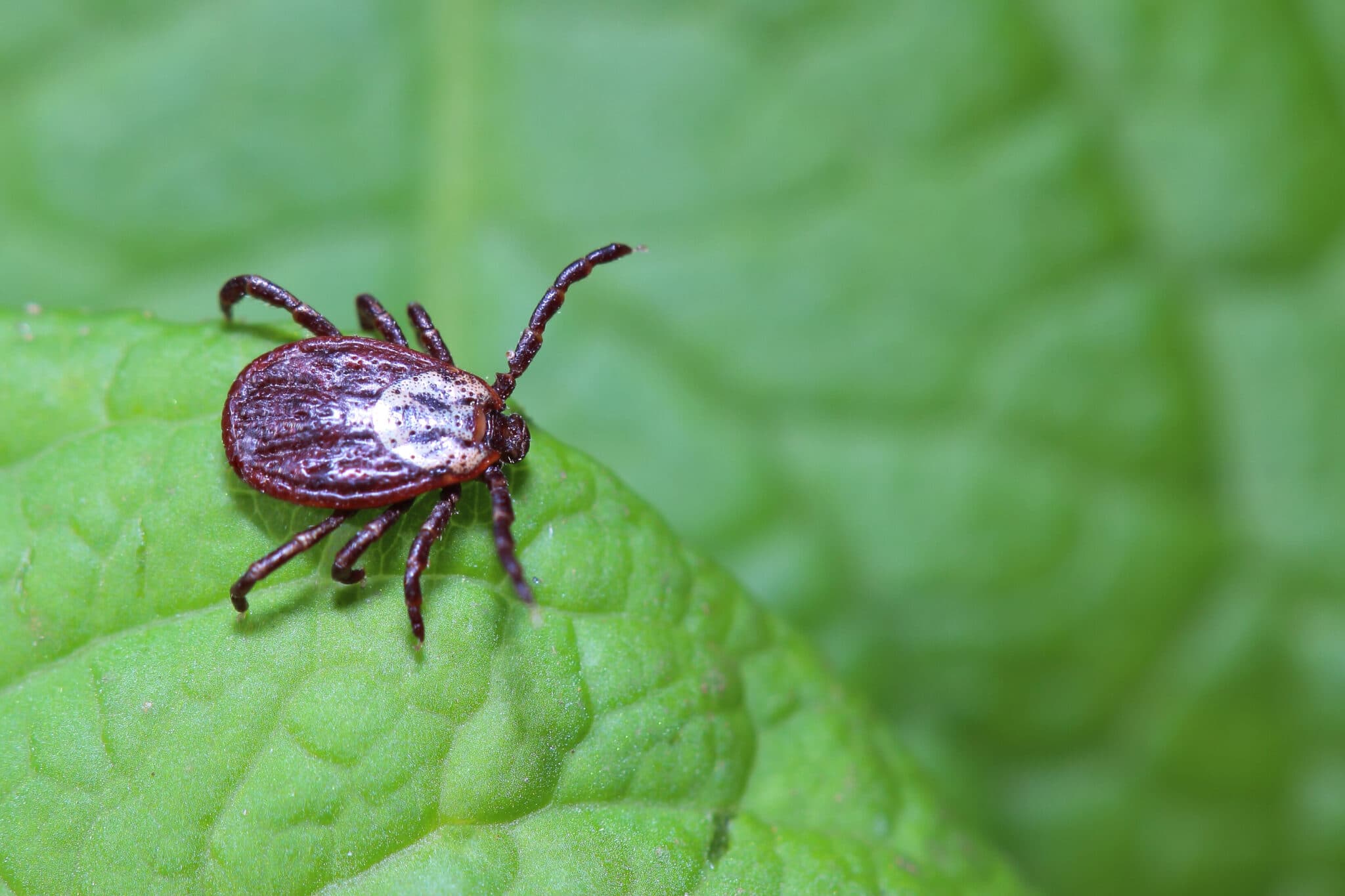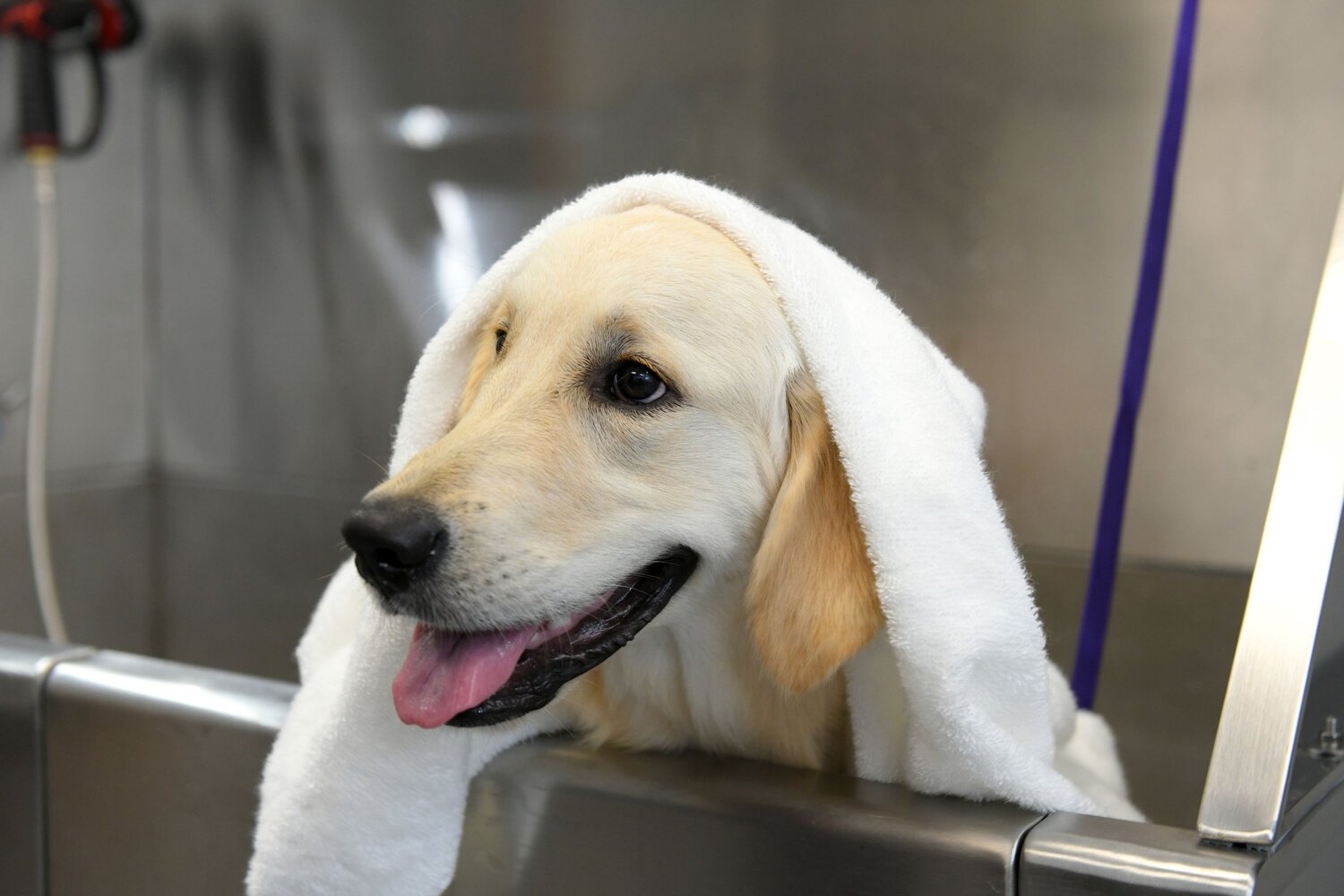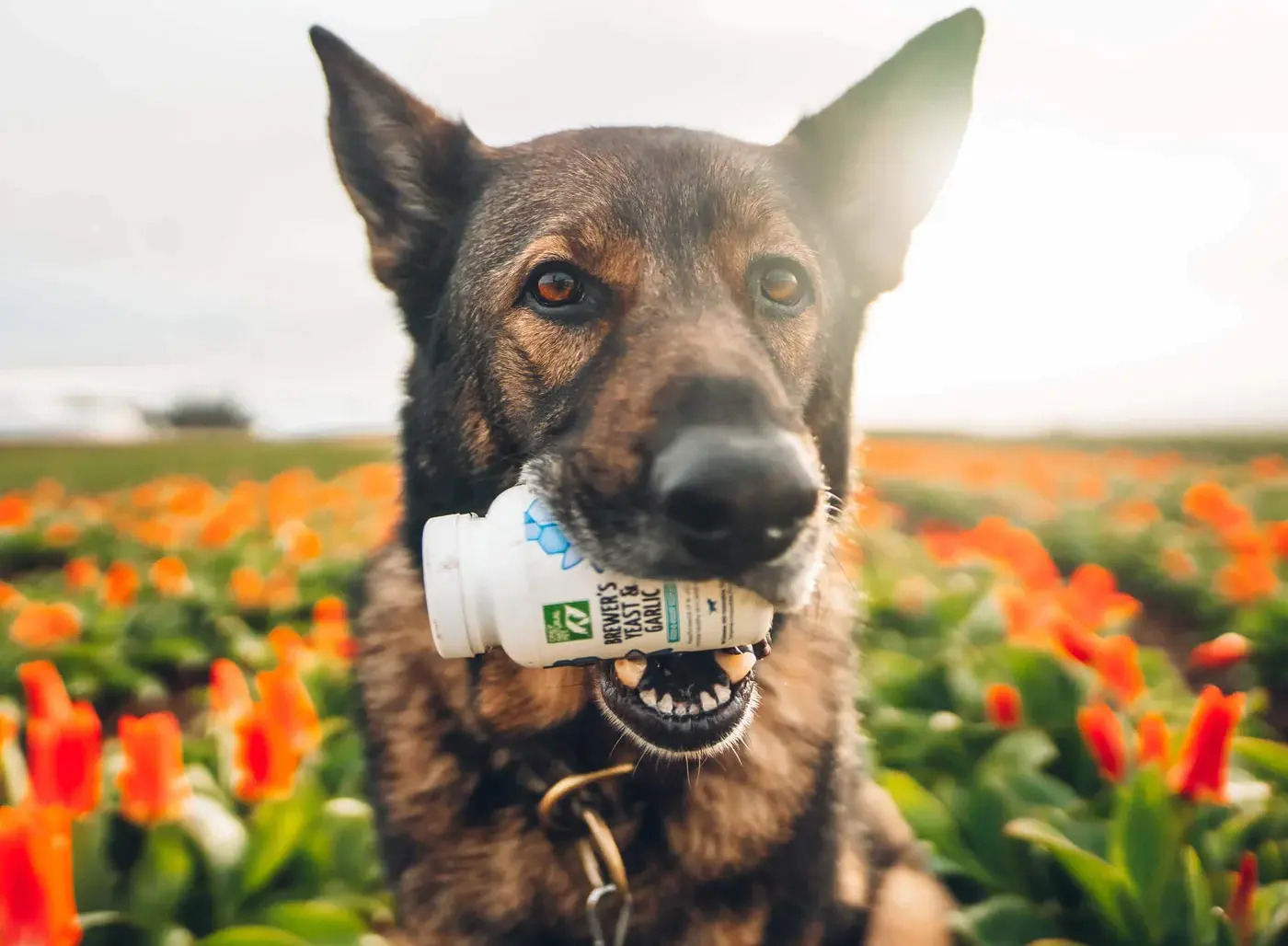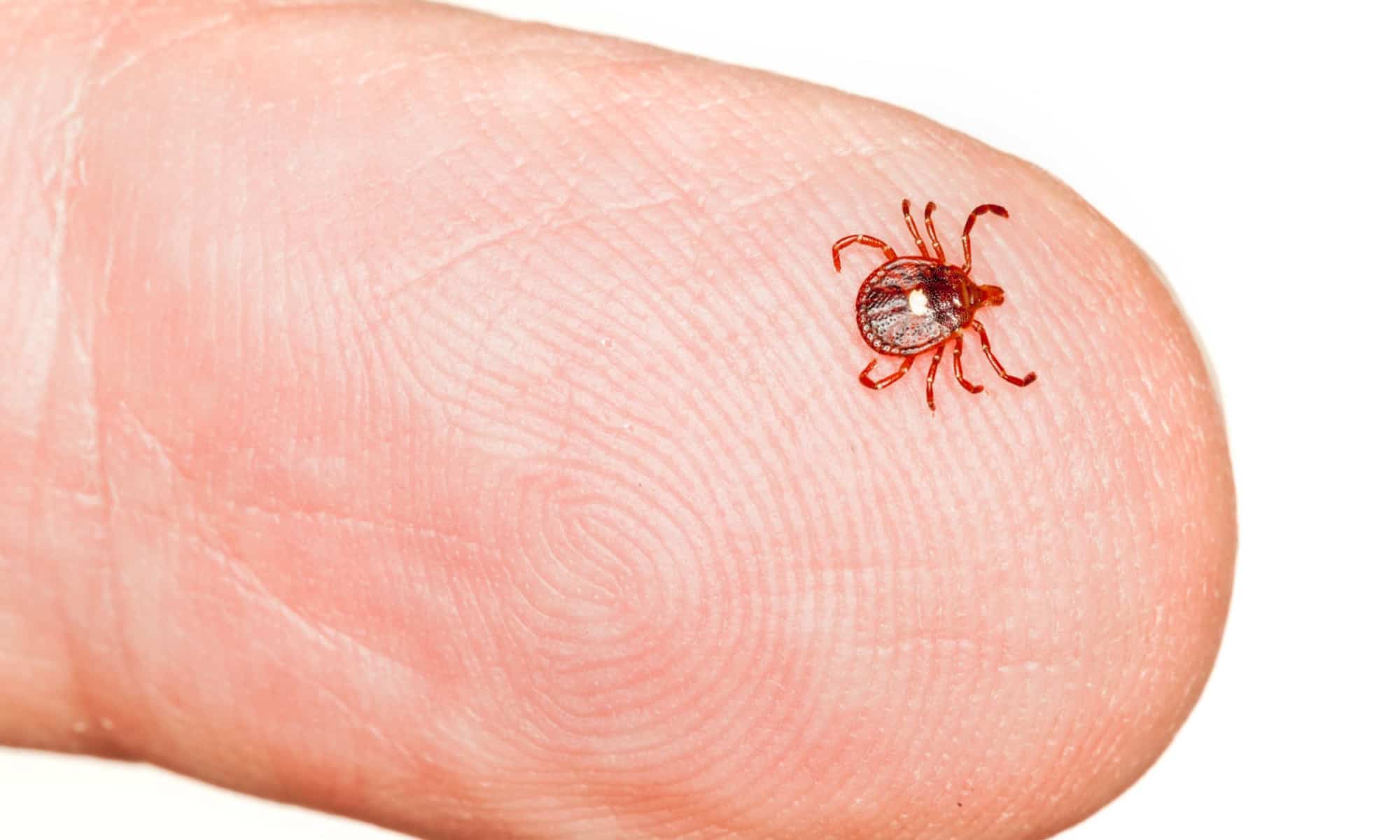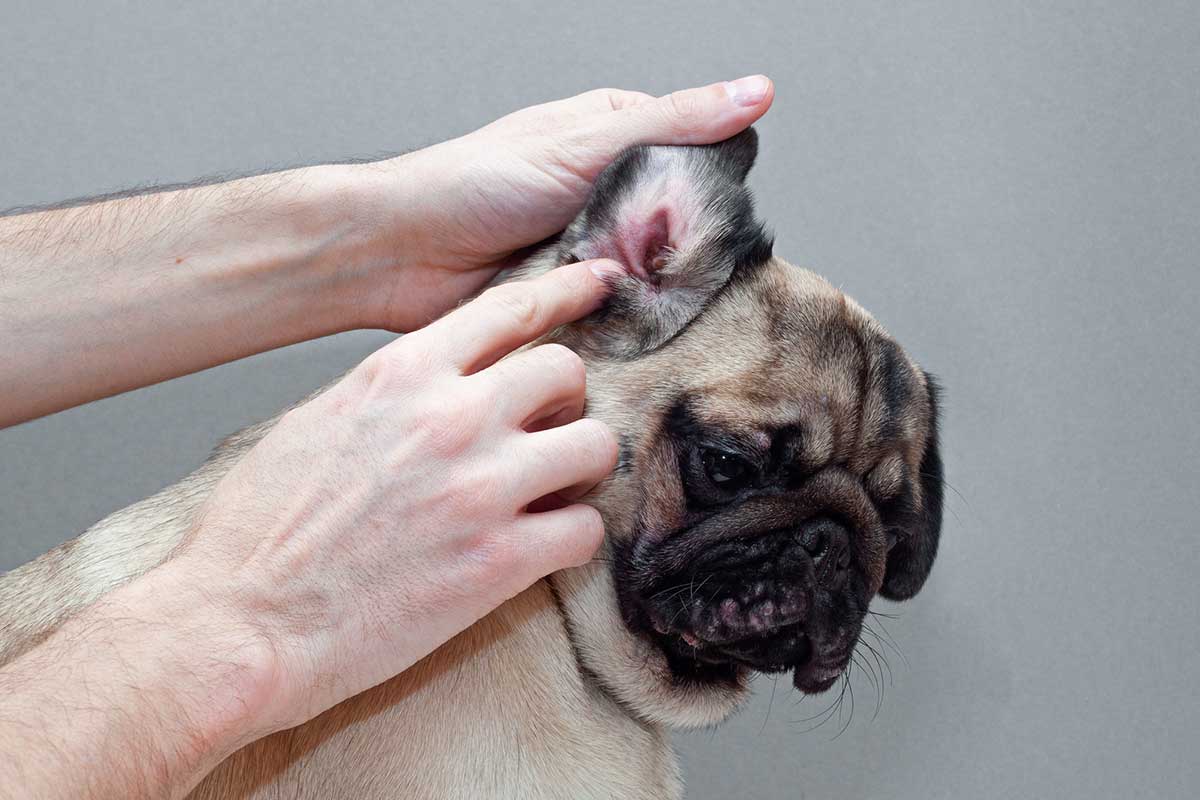Home>Health & Wellness>Common Health Issues>How To Get Rid Of Fleas And Ticks On My Dog
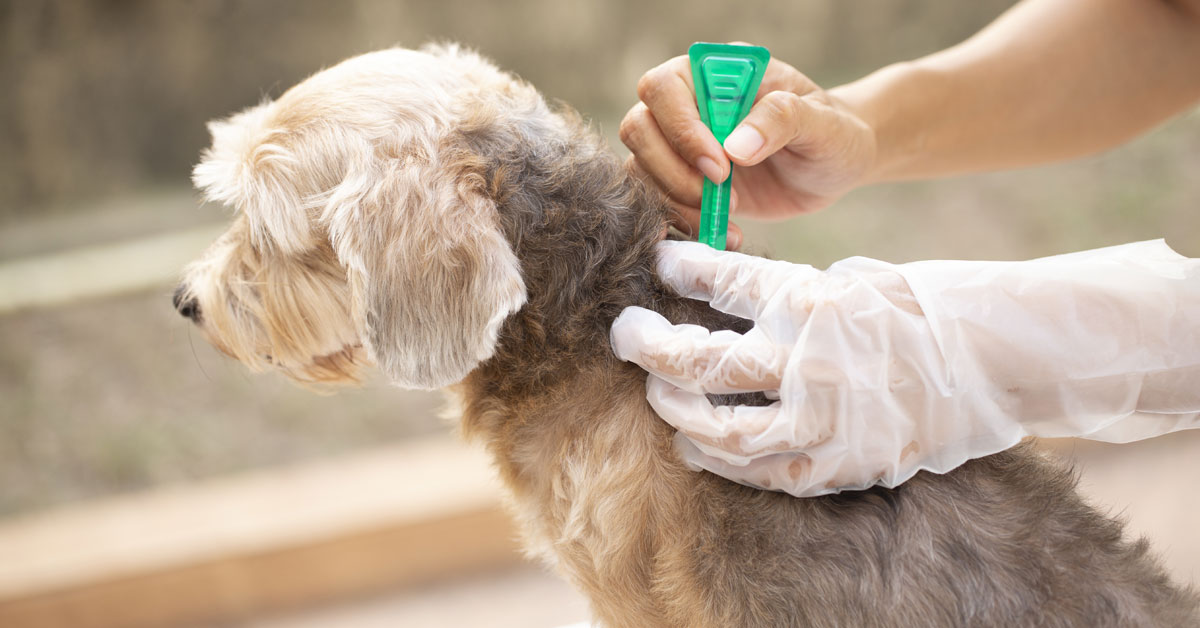

Common Health Issues
How To Get Rid Of Fleas And Ticks On My Dog
Modified: February 21, 2024
Learn effective methods to eliminate fleas and ticks on your dog and prevent common health issues. Keep your pet healthy and happy with our expert tips.
(Many of the links in this article redirect to a specific reviewed product. Your purchase of these products through affiliate links helps to generate commission for Pawsomeoldies.com, at no extra cost. Learn more)
Table of Contents
Introduction
Fleas and ticks are common pests that can wreak havoc on your dog's health and well-being. These tiny parasites not only cause discomfort and irritation to your furry friend but can also transmit diseases and lead to serious health issues. As a responsible pet owner, it's crucial to be proactive in preventing and eliminating these pesky intruders to ensure the happiness and vitality of your canine companion.
Fleas are wingless insects that survive by feeding on the blood of mammals, including dogs. These minuscule creatures can infest your dog's fur, causing incessant itching, skin irritation, and even allergic reactions. Ticks, on the other hand, are arachnids that latch onto the skin of animals to feed on their blood. These blood-sucking parasites not only cause discomfort but also pose a significant health risk, as they can transmit diseases such as Lyme disease and Rocky Mountain spotted fever.
In this comprehensive guide, we will delve into the various methods and remedies for getting rid of fleas and ticks on your dog. From natural preventive measures to chemical treatments and seeking professional help, we will explore the most effective strategies to combat these persistent pests. By understanding the nature of fleas and ticks and implementing the appropriate preventive and remedial actions, you can safeguard your dog from the perils posed by these troublesome parasites.
Read more: How To Get Rid Of Fleas On My Cat And Dog
Understanding Fleas and Ticks
Fleas and ticks are more than just annoying pests; they pose a significant threat to the health and well-being of your beloved canine companion. Understanding the characteristics and behaviors of these parasites is crucial in effectively combating their presence.
Fleas:
Fleas are small, wingless insects that thrive by feeding on the blood of mammals, including dogs. These agile pests can jump remarkable distances, allowing them to easily move between hosts. Their flattened bodies enable them to navigate through the dense fur of animals, making it challenging to detect and eliminate them. Flea infestations often lead to incessant itching, skin irritation, and in severe cases, allergic dermatitis. Moreover, fleas can transmit tapeworms and cause anemia, especially in young or small dogs.
Ticks:
Ticks are arachnids that attach themselves to the skin of animals to feed on their blood. These parasites are commonly found in outdoor environments, such as wooded areas and tall grass. Ticks can transmit a range of diseases, including Lyme disease, ehrlichiosis, and Rocky Mountain spotted fever. Unlike fleas, ticks remain attached to their host for an extended period, engorging themselves with blood. Their presence can lead to skin irritation, inflammation, and in severe cases, paralysis.
Life Cycle:
Understanding the life cycle of fleas and ticks is essential in devising effective control strategies. Fleas undergo complete metamorphosis, progressing through egg, larval, pupal, and adult stages. The eggs are laid on the host but often fall off into the surrounding environment, where they develop into larvae and pupae before emerging as adult fleas. Ticks, on the other hand, have a simpler life cycle, progressing from egg to larva, nymph, and adult stages. Ticks require a blood meal at each stage of their development, making them a persistent threat to dogs and other animals.
By gaining a comprehensive understanding of the biology and behavior of fleas and ticks, pet owners can take proactive measures to prevent infestations and protect their dogs from the potential health risks associated with these parasites.
Read more: How Do I Get Rid Of The Fleas On My Dog
Prevention Methods
Preventing fleas and ticks from infesting your dog is paramount in ensuring their well-being and comfort. Implementing proactive measures to deter these pesky parasites can significantly reduce the risk of infestation and the associated health concerns. Here are some effective prevention methods to safeguard your dog from fleas and ticks:
-
Regular Grooming: Maintaining a regular grooming routine for your dog is essential in preventing flea and tick infestations. Brushing your dog's fur helps to remove dirt, debris, and potential hitchhiking pests. Additionally, it allows you to inspect your dog's skin for any signs of fleas or ticks, enabling early detection and intervention.
-
Use of Preventive Products: Utilizing flea and tick preventive products such as spot-on treatments, collars, and oral medications can provide long-term protection for your dog. These products are designed to repel and kill fleas and ticks, effectively reducing the risk of infestation. Consult with your veterinarian to determine the most suitable preventive products for your dog based on their age, size, and health status.
-
Environmental Management: Fleas and ticks can lurk in your dog's living environment, including carpets, bedding, and outdoor spaces. Regularly vacuuming and washing your dog's bedding can help eliminate flea eggs and larvae, reducing the likelihood of infestation. Outdoor areas frequented by your dog should be kept well-maintained, with tall grass and foliage trimmed to minimize tick habitats.
-
Regular Inspections: Conducting routine inspections of your dog's fur and skin is crucial in detecting fleas and ticks early. Pay close attention to areas where these parasites are commonly found, such as around the ears, neck, and tail. Promptly removing any ticks and addressing flea infestations can prevent the situation from escalating.
-
Limit Outdoor Exposure: Minimizing your dog's exposure to environments where fleas and ticks are prevalent can help reduce the risk of infestation. Avoiding wooded areas, tall grass, and areas with high wildlife activity can lower the likelihood of your dog coming into contact with these parasites.
-
Professional Pest Control: Seeking the assistance of professional pest control services can be beneficial in managing flea and tick infestations in your home and yard. Professional exterminators can employ targeted treatments to eliminate existing infestations and implement preventive measures to deter future occurrences.
By incorporating these preventive methods into your dog's care routine, you can create a protective shield against fleas and ticks, promoting a healthier and happier life for your beloved canine companion. Regular diligence and proactive measures are key in mitigating the risks associated with these persistent parasites.
Natural Remedies
In addition to conventional preventive products and treatments, natural remedies can serve as effective alternatives for repelling and combating fleas and ticks on your dog. These natural approaches offer pet owners the opportunity to address pest control using gentle, non-toxic methods that align with a holistic approach to pet care. Here are some natural remedies that can help in the fight against fleas and ticks:
-
Diatomaceous Earth (DE): Diatomaceous earth is a fine powder derived from fossilized algae. When sprinkled onto your dog's fur and bedding, DE acts as a desiccant, effectively dehydrating and killing fleas and ticks upon contact. It is important to use food-grade diatomaceous earth, as other forms may contain additives that can be harmful to pets.
-
Essential Oils: Certain essential oils, such as cedarwood, lavender, and eucalyptus, possess natural repellent properties that can deter fleas and ticks. Diluted essential oils can be applied to your dog's collar or bedding to help repel these pests. However, it is crucial to consult with a veterinarian before using essential oils on your dog, as some oils can be toxic if not properly diluted or if the dog has underlying health conditions.
-
Herbal Flea Collars: Herbal flea collars, infused with natural ingredients such as citronella, rosemary, and lemongrass, can provide a chemical-free alternative for repelling fleas and ticks. These collars emit a subtle aroma that deters pests without exposing your dog to harsh chemicals.
-
Apple Cider Vinegar Spray: A solution of diluted apple cider vinegar can be used as a natural flea and tick repellent. When applied to your dog's coat, the acidity of the vinegar creates an environment that is inhospitable to fleas and ticks. However, it is important to perform a patch test on a small area of your dog's skin to ensure they do not have any adverse reactions to the vinegar.
-
Regular Bathing and Grooming: Regular bathing with a gentle, natural pet shampoo can help remove fleas and ticks from your dog's coat. Additionally, thorough grooming with a fine-toothed comb can help physically remove these pests and their eggs from your dog's fur.
It is important to note that while natural remedies can be effective, they may not provide the same level of efficacy as conventional chemical treatments. Additionally, individual dogs may react differently to natural remedies, so it is essential to monitor your dog for any adverse reactions and consult with a veterinarian before implementing these methods.
By incorporating natural remedies into your flea and tick control regimen, you can provide your dog with a more holistic and environmentally friendly approach to pest management, while complementing traditional preventive measures.
Chemical Treatments
Chemical treatments play a pivotal role in effectively combating fleas and ticks on dogs. These products are formulated to target and eliminate existing infestations while providing long-term protection against reinfestation. It is essential to consult with a veterinarian before using any chemical treatments to ensure the safety and suitability for your dog. Here are some commonly used chemical treatments for flea and tick control:
-
Spot-on Treatments: Spot-on treatments are topical products applied directly to the skin between the dog's shoulder blades. These treatments typically contain active ingredients such as fipronil, imidacloprid, or permethrin, which are effective in killing fleas and ticks upon contact. Spot-on treatments provide sustained protection, often remaining effective for several weeks before requiring reapplication.
-
Oral Medications: Oral flea and tick medications are available in the form of chewable tablets or flavored chews. These medications contain insecticides that are ingested by the dog and circulate in the bloodstream, effectively killing fleas and ticks when they feed on the dog's blood. Oral medications offer a convenient and hassle-free approach to pest control, providing systemic protection against fleas and ticks.
-
Flea and Tick Collars: Flea and tick collars are infused with active ingredients that release gradually to repel and kill fleas and ticks. These collars are worn around the dog's neck and provide continuous protection against pests. Some collars contain ingredients such as deltamethrin or flumethrin, which offer extended protection against fleas and ticks for several months.
-
Sprays and Powders: Flea and tick control sprays and powders contain insecticides that can be applied directly to the dog's coat. These products are designed to kill existing fleas and ticks while providing residual protection against reinfestation. Sprays and powders are particularly useful for targeting specific areas of infestation and can be used in conjunction with other preventive measures.
When using chemical treatments for flea and tick control, it is crucial to follow the manufacturer's instructions and dosage guidelines. Additionally, monitoring your dog for any adverse reactions or sensitivity to the products is essential. Regular consultations with a veterinarian can help ensure the safe and effective use of chemical treatments, taking into account your dog's age, health status, and any potential interactions with other medications.
By incorporating chemical treatments into your dog's pest control regimen, you can effectively combat existing infestations and provide long-term protection against fleas and ticks. These products, when used responsibly and in conjunction with other preventive measures, play a vital role in safeguarding your dog's health and well-being.
Professional Help
In cases of severe flea and tick infestations, or when conventional preventive and remedial measures prove ineffective, seeking professional help from a veterinarian or pest control expert is paramount. These professionals possess the expertise and resources to address persistent infestations and provide tailored solutions to ensure the health and well-being of your dog.
Veterinarians are equipped to assess the extent of flea and tick infestations and recommend appropriate treatment options based on your dog's specific needs. They can conduct thorough examinations to identify any underlying health issues resulting from the infestation and prescribe medications or treatments to alleviate discomfort and eradicate the parasites. Additionally, veterinarians can offer valuable guidance on selecting the most suitable preventive products and provide insights into environmental management strategies to minimize the risk of reinfestation.
In instances where flea and tick infestations extend beyond the scope of home-based treatments, professional pest control services can offer targeted solutions to eliminate pests from your living environment. Pest control experts employ specialized techniques and products to eradicate fleas and ticks from your home, yard, and surrounding areas. These professionals can conduct thorough inspections to identify the source of infestations and implement tailored pest management plans to address the root cause of the problem.
Furthermore, professional pest control services can provide ongoing monitoring and maintenance to ensure long-term protection against fleas and ticks. By leveraging their expertise in pest control, these professionals can create a comprehensive strategy to safeguard your home and protect your dog from the perils of persistent infestations.
It is essential to communicate openly with veterinarians and pest control experts, providing detailed information about your dog's health, living environment, and any previous attempts at flea and tick control. This collaborative approach allows professionals to devise targeted solutions that align with your dog's well-being and the specific challenges posed by the infestation.
By seeking professional help, pet owners can gain access to specialized knowledge and resources that are instrumental in addressing complex flea and tick infestations. The expertise and guidance provided by veterinarians and pest control experts play a pivotal role in ensuring the effective management of these persistent pests, ultimately promoting the health and happiness of your canine companion.
Read more: How To Get Rid Of Fleas In A Dog Pen
Conclusion
In conclusion, safeguarding your dog from the perils of fleas and ticks requires a multifaceted approach that encompasses preventive measures, natural remedies, chemical treatments, and, when necessary, professional assistance. By understanding the biology and behavior of these persistent parasites, pet owners can proactively implement strategies to mitigate the risks associated with infestations and ensure the well-being of their canine companions.
Prevention remains the cornerstone of effective flea and tick control, with regular grooming, the use of preventive products, and environmental management serving as crucial components of a comprehensive preventive regimen. Natural remedies offer pet owners the opportunity to complement traditional preventive measures with gentle, non-toxic alternatives, promoting a holistic approach to pest management. Additionally, chemical treatments play a pivotal role in eradicating existing infestations and providing long-term protection against fleas and ticks, when used responsibly and in consultation with a veterinarian.
In cases of persistent infestations or complex challenges, seeking professional help from veterinarians and pest control experts is instrumental in addressing the root cause of the problem and devising tailored solutions to safeguard your dog and living environment.
Ultimately, the well-being of your dog is at the heart of flea and tick control efforts. By integrating a combination of preventive measures, natural remedies, chemical treatments, and professional guidance, pet owners can create a protective shield against these persistent pests, promoting a healthier and happier life for their beloved canine companions. Regular diligence, open communication with professionals, and a proactive mindset are key in effectively managing flea and tick infestations, ensuring that your dog can thrive in a safe and pest-free environment.
By prioritizing the health and comfort of your dog and leveraging the diverse array of preventive and remedial strategies available, you can effectively combat the challenges posed by fleas and ticks, providing your furry friend with the care and protection they deserve.
